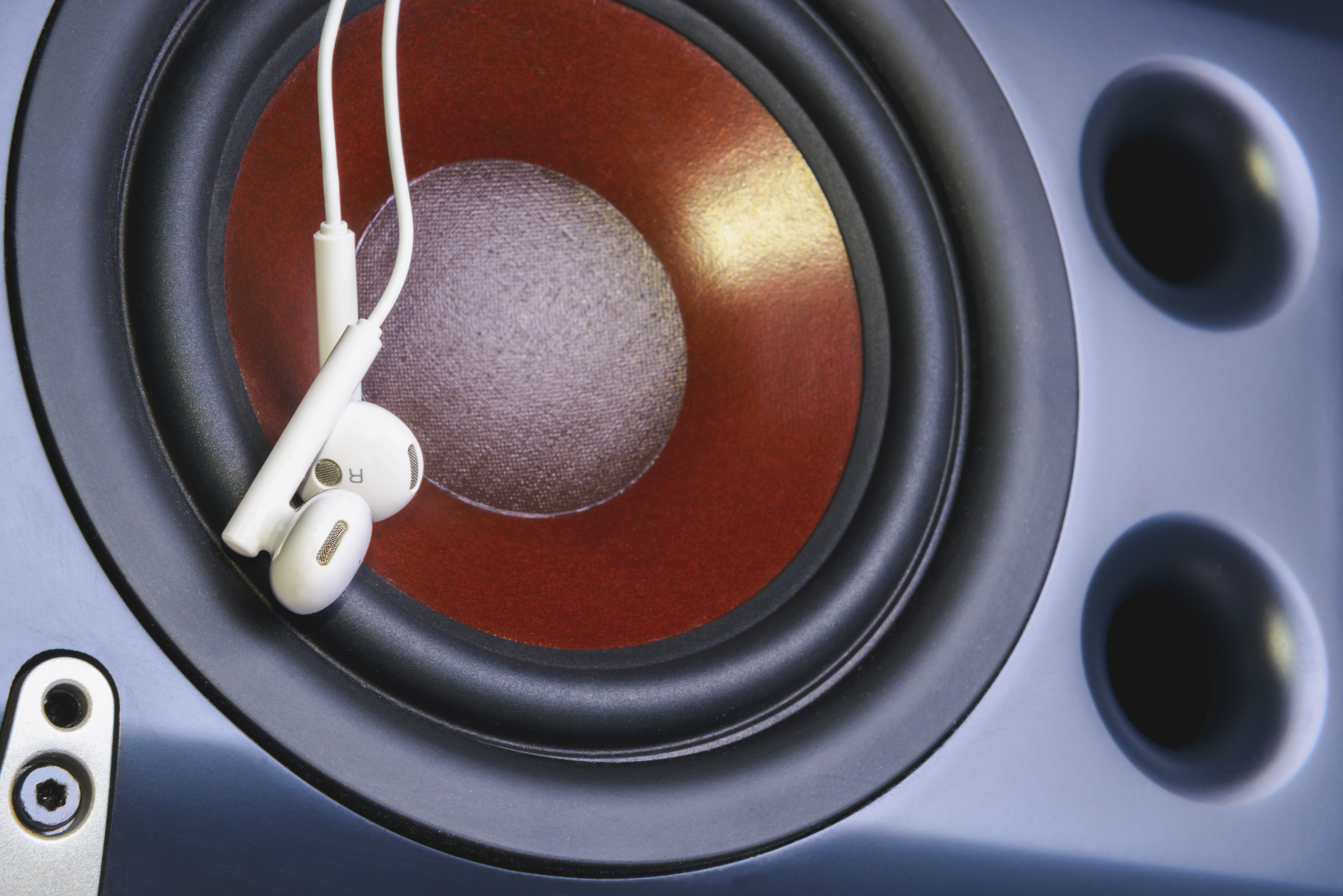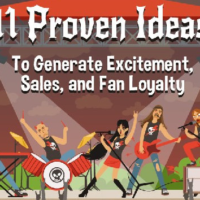Micro Influencers
Garrison Snell is the founder of Crosshair, a music app that affordably connects independent musicians directly to the playlist curators and social influencers who can help grow their audiences. One day after graduating from Belmont University in Nashville in 2015, Garrison founded Gyrosity Projects, a flourishing digital marketing firm that now employs 15 – all under the age of 30 – and is driven by a mission of better connecting clients and customers. Shortly after beginning Gyrosity, he was putting together a marketing budget for an artist with limited funds. After looking at multiple options, Snell realized that getting independent artists’ music in front of big names was just too expensive so he set out to create a way to introduce artists on a cost-effective basis. The web version of the Crosshair app was launched in January 2017. It is currently helping artists gain more than 300,000 streams per song per week.

Garrison talked about how he came up with the idea of Crosshair and how the platform helps artists grow their audiences in the current marketplace. He also shared some tips for musicians looking to invest in long-term, sustainable careers.
Music Consultant:
Thanks for taking some time to chat, Garrison. Tell me about how Crosshair came to be.
GS:
There’s definitely a little bit of a story behind that. We started our marketing agency, Gyrosity and had a bunch of independent artists with independent budgets. These artists were looking to get more out of their Spotify playlists, and they asked us if we could think of a way to do that.
About two years ago, I spent part of an independent artist’s budget taking a press trip up to New York to meet the Spotify team. We were trying to get some traction, and we really didn’t. So, we realized that in order to get traction, we would have to build a web application that would mimic what agency-style companies were doing in Nashville to support pitches to independent playlists.
We discovered there were two agency-style companies in Nashville doing this pitching: Both of them have a retainer-based system. As an artist, you already have to do this for PR and radio … why should you have to do it for streaming as well? I thought that, in the age of streaming, certainly we would be able to build a web app that could do this in the same way these agencies did it. It seemed to me like technology should be cutting the cost of some of these artist services.
I’ll be honest: The first version of the app we built was horrible. You have to understand something though: I’m 23, and I started this the day I graduated college. And to this day, I’ve never raised operational money. We hired everybody and built pretty much everything off vending. In bootstrapping, you literally have to just spend what you have to make it, to put a product out there and get a little bit of money in so you can make it better. It’s a back-and-forth process.
Music Consultant:
It’s refreshing to hear someone be transparent. You don’t always hear people talk honestly about the process of creating something.
GS:
One of our main goals as a company is to be completely transparent about what we are doing..
So, the first version of the app we put out was pretty bad. And we did a couple sales, then pulled it down and then put a second version out that was also a little rough. We built a third version that we launched in January that has been working well. It’s doing its job and we are basically pairing songs with digital influencers that are curating content on their channels, everything from Spotify playlists to YouTube channels to Instagram accounts. These are people who are using music and either have to license that music or are using stock-sounding music that is not of the highest quality. They’re looking for win-win relationships with independent artists so they don’t have to spend a lot of money licensing the music. They are also looking to act as tastemakers to bring extra flavor to their channel – to add an extra edge to what they do as influencers.
Obviously independent artists are looking for organic recommendations for their songs that are affordable, which is really hard to find right now because it typically requires working with a marketing agency.
Music Consultant:
Well, and from what I’ve witnessed, the marketplace has traditionally supported big companies and major label artists. And unless you’re Taylor Swift, you’re not going to get a company like Coke to back your play.
GS:
Totally. At the 59th Grammys, way more than half the nominees were independent labels or independently represented by rights holders, so things are changing somewhat. Now artists are piecing together services and tools for themselves and building their own organizations. I see Crosshair as one of those very first tools that you’re going to use as an independent artist to try to get your music in front of audiences organically. It’s pushing organic recommendations of these songs. When you think about the other tools that are out there, like SubmitHub and Facebook ads, what else can an independent artist with a pretty small budget do to push their music from nothing to something?
Music Consultant:
And Facebook ads produce pretty diminishing returns at this point.
GS:
I didn’t use to realize how massive of a knowledge gap there was among all of the creators that I interact with every day in town that have little budgets. They’ve saved $500 bucks or $1,000 bucks, and they don’t know where to put it. They are scared to put it or even a portion of it anywhere, because they want to make it worth their while.
I really think influencing your market is your biggest bang for your buck right now. And there are still plenty of micro-influencers, so 30 bucks, 50 bucks or 100 bucks here and there will really do a lot for you.
Music Consultant:
So, take me through the process of your work through Crosshair with independent artists.
GS:
Basically they show up on the site, and they go to the “create an account” section to sign up. From there, they are prompted to create a campaign. To create a campaign, there are quite a few bits of metadata and other details they will enter in: everything from the song itself, to the album marks, to the pitch message, to the pitch sheet, to the channels that they’re interested in promoting to, to the actions that they hope the influencers will take using their song (“use it in a video,” “put it on your playlist,” etc.
Music Consultant:
And who are these influencers?
GS:
So, 60% of our database is Spotify independent playlisters at this point. It’s basically people like you and I who have created playlists that have significant or notable followings and are interested in turning their playlists into an economic asset. Right now there’s really no monetization model, no way to make any money out of this following they’ve amassed. And there’s no directory for them, aside from what we have, so it is hard to track them down any other way or to replicate a database on an artist-by-artist basis.
There are also YouTubers who do exercise videos and other similar things, and Instagram account owners who do dance videos, makeup tutorials, etc. They all usually have music in the background when they’re doing their thing, so they need a place to find it that won’t be incredibly expensive.
And we have music supervisors on the platform, which is a really interesting area right now. These are people who are looking to license independent music into content. For example, we have a line to the team that supervises for HBO’s Silicon Valley along with all of their other projects, which is super cool. They’ve actually licensed a few of our independent artists. Our artists created the campaign through the app, and their installments distributed to those supervisors.
Additionally, we have Twitter accounts and some blogs and Tumblr blogs, SoundCloud channels, etc. But it is mostly Spotify YouTube, Instagram and supervisors. As an artist, you sign up, set up a campaign and select a bunch of criteria I mentioned earlier, plus the age and gender of the target listeners. And then you’re gonna pick a smattering the genres that describe your song.
On the other side of the equation, the influencer has selected similar criteria to classify their channel. Artists are pulling a list of influencers from our database that have signed up with our platform. We provide them with 50-100 influencers who are looking for music.
We do err on the side of “loose” pairings though, which is leading to some complaints. Some clients are saying songs didn’t seem to be matched with the most specific channels. But what a lot of artists don’t understand is that, for example, just because a channel is a pop channel and the artist makes pop music doesn’t mean that their music is going to always be right for it. Similarly, influencers might like a song of yours and then not like the next one. But tust because someone says your song is not right for their channel doesn’t mean that the system didn’t match you to the right people in the right way.
Music Consultant:
Well, music is certainly subjective, so you can’t predict everything.
GS:
Absolutely. We’re having to train our clients how to think about the process and the system so their understanding of it and their expectations are appropriate. Each song is a subjective piece of art.
Music Consultant:
I imagine that fit is also about timing. They may not be in need of something that an artist is offering in that moment.
GS:
That is true. But it also presents a major opportunity for us to become a lot better at matching songs to influencers based on criteria like channel preference. We’re going to be doing some cool stuff with recommendation API on Spotify over the next couple months, trying to get smarter about how we match these things.
Once there’s a match, the influencers go in and review the song and decide whether or not they want to use it. If they decide they are interested, a message channel pops up between the artist and the influencer. That’s where they work out how the mutually-beneficial relationship will work. For example, the influencer might say, “Hey, this is how I plan on using your song. Would you mind mentioning me in a tweet?”
Music Consultant:
You mentioned providing a list of influencers for artists. Are you actually handing out a list for these people to chase? Are you doing any of the chasing yourselves? or are you guys doing the chasing yourselves?
GS:
The chasing is happening within the platform. The list that comes back is just a list of Crosshair artist or influencer profiles, depending on what side you’re on. That list has no contact information outside the platform. It provides information that allows you to get in touch with the person within the environment of the app. And on that note, we don’t even allow clients to message influencers who are not interested in their songs.
Music Consultant:
And I can imagine you don’t just take on any artist. Is there a listening team or an A&R-type department that determines whether music is a fit for the platform?
GS:
That’s a good question. We actually take on anything that’s submitted at the moment, and we have a couple reasons for that. The first reason is related to what we were talking about a few minutes ago: Music is highly subjective. Just because we don’t like a song or don’t think it’s good enough doesn’t mean that is true. I feel like that would be perpetuating a major problem in the industry: the fact that artists often don’t get to hear feedback straight from fans, listeners, influencers, etc. I would rather let the influencers be the judge.
Influencers are in no way incentivized on the platform to keep it kind and are often rather harsh about saying what they think. I would say about 15-percent of projects email us and complain, “I didn’t get any adds.” We urge them to read what the influencers said, because they are not biased. They give specific reasons why the song is not going to go on their channel, and sometimes it’s because the song just is not good. That means artists sometimes will have to accept this and push to get better at their craft.
Actually, I think people need to be blunt with creators more often and tell them they need to go back and work on their craft. My dad was a musician and went to Nashville in the ‘90s and early 2000s to get feedback, and often people would tell him they liked his work when they didn’t or just not give him straight or objective feedback.
That being said, we did put in some barriers to entry on Crosshair. One is a financial barrier. We charge a $250 one-time fee. That amount is just enough for people to have to think about it carefully, but not so much that it’s impossible.
My thinking with Crosshair was that the people who were going to use the music would be the best reviewers of the music.
Music Consultant:
And can you take me through a successful campaign or provide some examples of artists who have been successful on Crosshair?
GS:
We actually have a little over 20 artists that we’re really excited about right now. There’s an artist named Ali Morgan who added Crosshair to a campaign in the last three or four weeks. In that time, she’s gone from a little under 1,000 plays to almost 100,000 plays, just from a few Crosshair playlist adds. If you go to her “About” section on Spotify, you can see that all the playlist-driving listeners were our playlists. She’s signed to a starter independent label called Silverado Records in Nashville. These small labels that are taking on all these artists they believe in but have limited resources see Crosshair as a tool that can give them a kick start, which is super cool. And she’s broken off to Discover Weekly now, so it’s been syndicated off about 52,000 playlists.
And that syndication is something that’s important to mention. It is attached to one of the hidden powers of Crosshair. There are two really big metrics on Spotify that they value: a five-percent streams-to-saves ratio and a low passive skip rate. A passive skip rate is what happens when a user is sitting there listening in the radio section or on a playlist and they don’t skip it within 20 seconds.
The five-percent streams-to-saves ratio is the one that’s really important for getting syndicated across playlists. So, for instance, if you have 100,000 streams, you want to have 5,000 or above saves. When you have this ratio, 99-percent of the time you will see it get kicked out to Discover Weekly. And depending on how new the song is, you might also see it kick out to the Release Radar, Viral 50 or Fresh Find programmatic playlists, which are entirely algorithmically driven.
Most Crosshair clients get to that five-percent ratio because of a lot of different factors, but a lot is based on the ads we are able to get for them. This leads right into another success story of ours, a pop artist named Mitchell Rose. He put his first song ever on Spotify, and we ran a Crosshair campaign. He did 13 playlists. Then, five weeks after we started the campaign, I woke up and looked at the RS insights, and he was on 756,000 Discover Weekly playlists, which was insanely cool. It was this massive spike from 100 monthly listeners to almost 25,000 monthly listeners. We just released another song too, and he shot back up to 90,000 monthly listeners. This momentum is because of this long-tail function of weekly check-ins. We look to see if people are listening to the song and then just deleting it, not listening to the song at all, listening to it a lot, etc. If people aren’t listening to it on a playlist it’s on now, we just seek out another person’s playlist where it might be a better fit.
Music Consultant:
How does the Discover Weekly playlist work exactly?
GS:
Discover Weekly is customized to a person based on their consumption tastes and put out every Monday. Its sole purpose is to get users to discover new music, and it is tangential to their current listening habits. I would say it’s “specificated.”
Music Consultant:
I’ve been told that on Spotify, the algorithm seems to respond to artists making a playlist with their music on it.
GS:
I think this works because it gets added to a whole bunch of people’s personal playlists, which ends up pushing up that streams-to-saved ratio.
Music Consultant:
These days, artists are really trying to get their music into the hands of tastemakers and trying to figure out how to incorporate their music in authentic ways on Spotify and other platforms. This might be a difficult question to answer, but what can the average artist expect in terms of hit rate when creating a Crosshair Music campaign?
GS:
A couple things: First of all, the high streams-to-saves ration is obviously the goal. But when people look at the Crosshair platform, they need to be able to figure out whether or not they were successful. They usually look at the number of total ads or interests they got. A lot of those can be on YouTube, Instagram, etc. I would say if you got 50 adds total, Spotify is probably going to be about 25-percent of that. The rest are sprinkled across other platforms.
I would say if you are approaching 100 influencers as an artist, you will probably see a 60/40 split either way. I’ve never seen an artist floor every single influencer they get paired with.
I think you see these numbers because people’s taste has gotten so specific and so horizontal that you don’t see people say, “I’m listening to pop music.” Instead, you see people who are into one really specific type of pop music and the things that are tangentially connected to that type of pop.
Music Consultant:
I really just have one more question for you, and it’s about the larger industry. Is there any advice, business or otherwise that you would have for an independent artist trying to make it in the current industry?
GS:
Maybe I’m biased because this is how I built my business, but I never spent more than I was making. Every person has something that they can sell – something they can do in the short term to make money to put back towards their dream. Personally, I was selling Facebook ads. That was the crux of my job for the first 18 months of this company. Now, I like that we do so much more than that, but I did what I had to in order to excel.
If you’re trying to be an artist, you need to find something you can do to make money, even if it’s not related to music and stay away from locking yourself into a job. Be a freelancer or a contractor at something you’re good at and then pour that money back into your dream career. Eventually, you will get to a point where the money and the work you’re doing match up.
I realize it’s really hard to do in music, but there are so many opportunities with things like design, branding and on-demand printing. To me, it’s inconceivable that an artist wouldn’t design something or create something that’s compelling and then put it on a hat or t-shirt and sell it. But the main idea when you are starting out is to find a way to make money so you have funds to invest in your music career.
To learn more about the work Garrison Snell does for artists or sign up for a campaign, visit the Crosshair website or the app’s Facebook page. You can also follow Garrison on Twitter.









